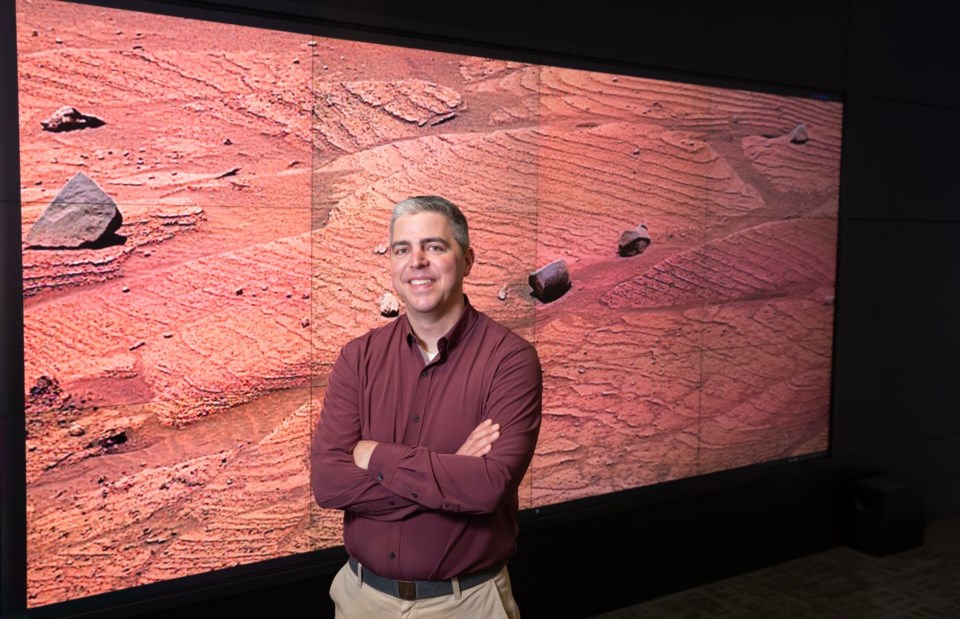CALGARY — The lead author of a new study pointing to more proof of water on Mars says it brings scientists a step closer to determining whether the planet was ever capable of supporting life.
But Ben Tutolo from the University of Calgary jokingly says the only downside is he lost out in the office betting pool.
Tutolo is an associate professor with the university's faculty of science and participating scientist on the NASA Mars Science Laboratory: Curiosity Rover team.
The team is working to understand how the climate changed on ancient Mars using data from the rover which is described as a "roving geochemical and geological laboratory."
The paper, published this week in the journal Science, reveals that three of Curiosity’s drill sites had siderite, an iron carbonate material, within sulfate-rich layers of Mount Sharp in Gale Crater.
NASA says the discovery of carbonate suggests the ancient Martian atmosphere contained enough carbon dioxide to support liquid water on the planet’s surface. As the atmosphere thinned, that carbon dioxide turned into rock.
"We know based on the evidence on the surface of Mars that there was abundant liquid water flowing on its surface in the past," Tutolo said.
"In order for that to happen, all our climate models state that there must have been much higher concentrations of carbon dioxide in the atmosphere of ancient Mars than today."
The question about whether Mars was ever capable of supporting life remains unanswered.
"It tells us that the planet was habitable," said Tutolo.
Curiosity drills three to four centimetres down into the planet's subsurface to study its chemical and mineral makeup, but even a few centimetres can represent billions of years of history.
Tutolo says his rover research fits with his ongoing work on Earth — trying to turn carbon dioxide from human sources into carbonates as a climate change solution.
Growing up in Pennsylvania, Tutolo said outer space was not on his mind until he started at the University of Calgary. He has no desire to journey to the Red Planet as part of a team of explorers.
"Absolutely not. I am fundamentally fascinated with learning and explaining things about the world around us including the surface of Mars and I don't need to go there to explain that," he said.
Tutolo said he always knew he would end up a scientist.
"I definitely remember grade school drawings of 'What do you want to be when you grow up,' and definitely it was either a scientist or professional fly fisherman and somehow one of them won out — the one that plays the bills."
But when it came to the office pool on the rover find, Tutolo lost out.
"Each time we drill ... the whole team gets the opportunity to guess what minerals they think might be in the sample. We had mapped it from orbit," Tutolo said.
"I think I got maybe two or three of the minerals right. The sample was taken right after I joined the mission three years ago.
"I definitely lost the pool," he said with a laugh.
"You win a mug."
This report by The Canadian Press was first published April 17, 2025.
Bill Graveland, The Canadian Press




